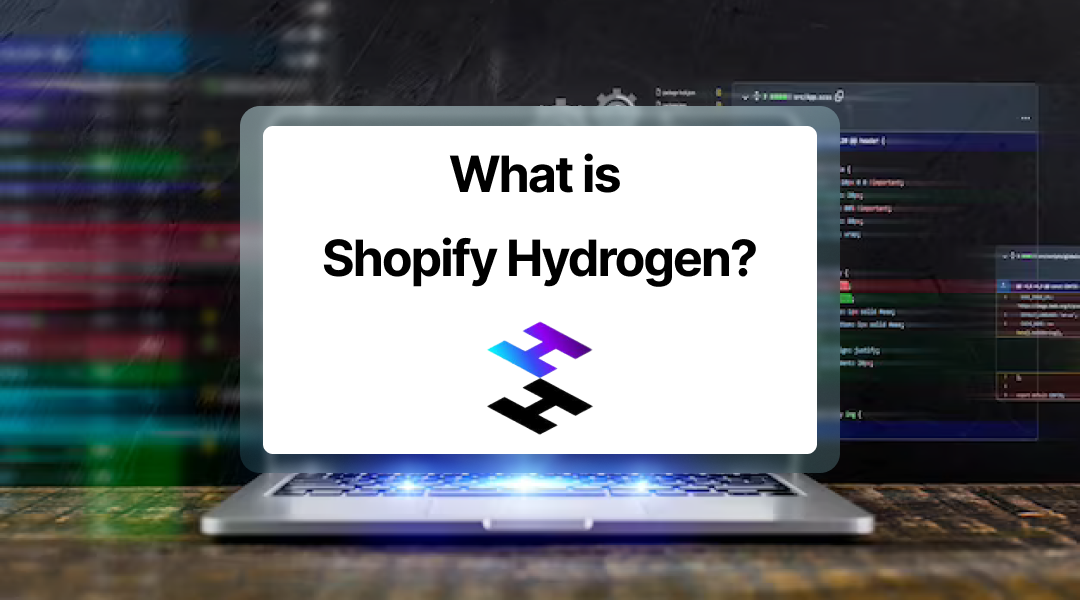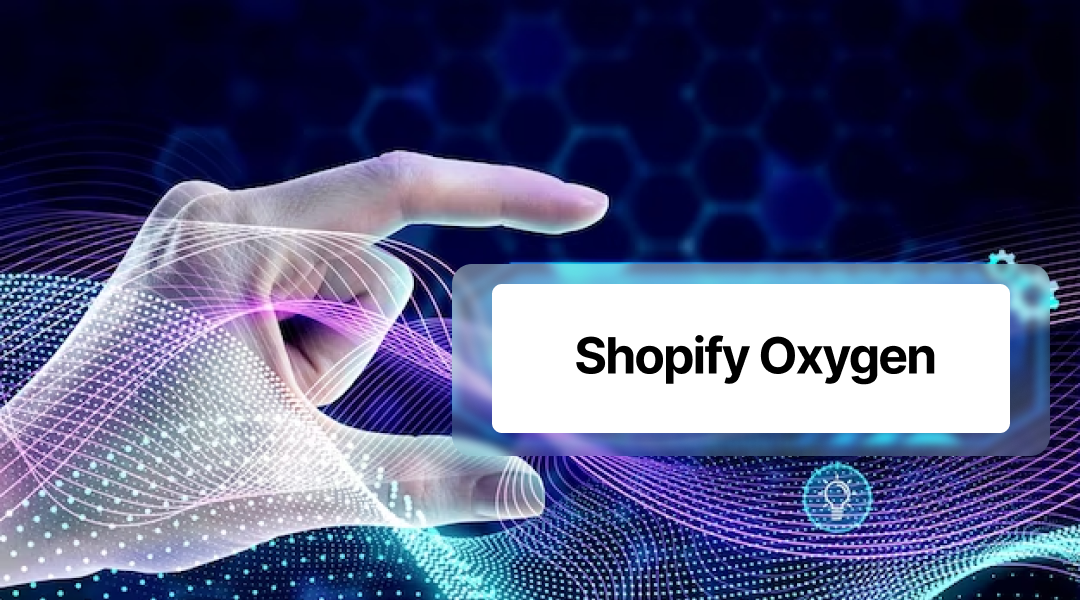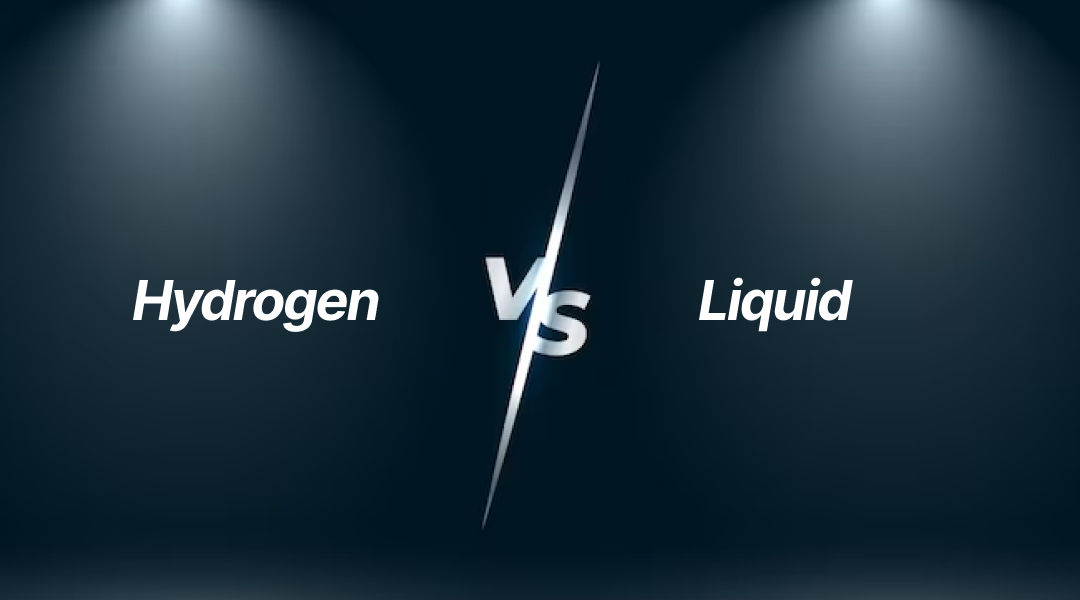Table Of Content
Shopify Hydrogen & Oxygen: All you need to know!

Are you ready to unlock the full potential of a new solution for building Shopify’s custom storefront? Look no further than the dynamic duo of Shopify Hydrogen and Shopify Oxygen, reshaping how businesses create headless commerce stores, decoupling the front end from the back end for unmatched flexibility. With their advantages, Shopify Hydrogen and Oxygen are at the forefront of delivering exceptional online shopping experiences.
This guide delves deep into the benefits of harnessing their combined power, their pricing, and how they work. Join us as we explore how these cutting-edge solutions transform eCommerce stores.
What are Shopify Hydrogen & Oxygen?
What is Shopify Hydrogen?

Shopify Hydrogen is an advanced technology developed by Shopify to simplify and enhance the process of building high-performance, server-side rendered (SSR) applications within the Shopify ecosystem. It is designed to enable the creation of highly customized front-end experiences for eCommerce websites.
This framework is based on the React JavaScript library. It allows developers to build unique user interfaces while seamlessly connecting to Shopify's backend infrastructure, including access to critical eCommerce data like customer information and product details.
What is Shopify Oxygen?

Shopify Oxygen is a comprehensive hosting solution offered by Shopify to support headless eCommerce setups. It is a global hosting provider capable of hosting custom content directly within the Shopify platform, including Hydrogen-powered storefronts. This eliminates the need for merchants to rely on external third-party hosting providers like Netlify when adopting a headless eCommerce approach.
One of the key advantages of Shopify Oxygen is its integration with Shopify's extensive global infrastructure, comprising over 100 server locations worldwide. This robust infrastructure ensures reliable and high-performance hosting for headless eCommerce stores.
Shopify Oxygen simplifies the hosting process for headless eCommerce stores built with Hydrogen. It manages the server components and complexities required for Hydrogen-powered front-ends without necessitating the involvement of external third-party hosting providers. This streamlines the deployment and maintenance of headless Shopify stores, offering a seamless hosting solution within the Shopify ecosystem.
How does Shopify hydrogen work?
Shopify Hydrogen is a React-based framework primarily designed to construct headless eCommerce websites' front end. However, it distinguishes itself by seamlessly integrating with Shopify's APIs and incorporating robust security measures. In contrast, alternative headless frameworks like Next.JS require developers to establish these Shopify connections from scratch.
Notably, Shopify Hydrogen enhances development efficiency with its repository of pre-fabricated components, expediting the creation of Hydrogen-driven headless stores. These components balance expediency and headless architectures' inherent adaptability and personalization characteristics.
Furthermore, Shopify's Storefront API opens the gateway for headless stores to tap into Shopify's extensive suite of features, granting developers unparalleled autonomy over their technological stack. It starkly contrasts traditional non-headless Shopify setups, which rely on a code language known as Liquid, which operates within Shopify's confines, constraining developers to Shopify's predefined capabilities.
Highlight features of Shopify hydrogen
React-Based Framework
Shopify Hydrogen is built on the React framework, a widely used and highly regarded JavaScript library for building user interfaces. React is known for its speed, efficiency, and scalability. With Shopify Hydrogen being React-based, developers can leverage React's capabilities to create fast and dynamic user experiences for their eCommerce stores. React's component-based architecture allows for easy management of complex UI elements, making it an essential feature for building modern, responsive storefronts.
Server-Side Rendering (SSR)
Hydrogen offers high-performance SSR capabilities. SSR is essential for improving page load times and SEO. When a user visits a Shopify Hydrogen-powered storefront, the server renders the initial HTML content, which is then sent to the user's browser. This approach provides faster initial page loads and better search engine visibility, improving user experience and increasing discoverability in search engine results.
TypeScript Support
TypeScript is a statically typed superset of JavaScript that adds strong typing to the language. TypeScript support in Shopify Hydrogen is essential for ensuring code reliability and maintainability. With TypeScript, developers benefit from features like type checking, autocompletion, and better tooling, which leads to fewer runtime errors and improved code quality. This feature enhances the development experience and helps prevent common bugs in complex eCommerce projects.
Pre-Built Components
Shopify Hydrogen includes a library of pre-built components that expedite development. These components cover essential eCommerce functionalities such as shopping carts, variant pickers, and content galleries. Using these pre-built components saves developers time and effort, allowing them to focus on creating custom, brand-specific features. This feature enhances productivity and reduces the development timeline, making it a valuable asset for eCommerce projects.
Customizability
While offering pre-built components, Shopify Hydrogen also provides extensive customizability. This is a crucial feature for tailoring the storefront to a brand's unique requirements. Developers can create custom front-end experiences, ensuring that the eCommerce store aligns perfectly with the brand's identity and user experience goals. This customizability empowers brands to stand out in a competitive eCommerce landscape and deliver a personalized shopping experience to their customers.
These key features of Shopify Hydrogen contribute to creating high-performance, customizable, and maintainable eCommerce storefronts. Developers benefit from React's efficiency, SSR for speed and SEO, TypeScript for code quality, pre-built components for productivity, and customizability for delivering unique brand experiences.
Pros & Cons of Shopify hydrogen
Pros
- High Performance: Shopify Hydrogen enables the creation of lightning-fast, server-side rendered (SSR) apps on Shopify, resulting in exceptional website speed and responsiveness.
- Customization: It offers a high degree of customization, allowing developers to build entirely unique front-end experiences tailored to specific brand requirements.
- React Framework: Built on React, a popular and influential JavaScript library, Shopify Hydrogen leverages React's flexibility and usability.
- Pre-built Components: The framework provides a library of pre-built components that expedite development, saving time and effort.
- Access to Shopify Backend: Developers can access Shopify's backend data, including customer information, product details, and more, for seamless integration.
- Improved SEO: Headless setups, like Shopify Hydrogen, can enhance SEO due to improved site speed and other technical optimizations.
Cons
- Developer Dependency: Building and maintaining a Shopify Hydrogen-powered store requires skilled developers, which can be costly.
- Limited App Support: While Shopify has a robust app ecosystem, headless setups may have limited support for certain apps, requiring custom development.
- Complexity: Headless eCommerce can be complex and may only be necessary for some businesses, especially smaller ones.
- Content Management: Unlike traditional Shopify themes, Hydrogen does not include a built-in content management system (CMS), so handling content can be more challenging.
- Higher Costs: While Hydrogen is free, Shopify Plus is required for free hosting, which can be expensive for smaller businesses.
- Learning Curve: Developers may need to learn the intricacies of Shopify Hydrogen and React if they are not already familiar with these technologies.
Ultimately, buying Shopify Hydrogen should be based on a brand's specific needs and technical capabilities. It offers decisive advantages for those requiring high customization and performance but may be overkill for simpler eCommerce setups.
Shopify hydrogen & oxygen pricing
Hydrogen and Oxygen come at no additional cost as they are publicly available JavaScript frameworks. Shopify offers complimentary hosting for Hydrogen stores, but access to this free hosting typically requires a Shopify Plus subscription. Additional tools and third-party providers may be necessary to leverage APIs and deliver a comprehensive shopping experience.
Shopify hydrogen vs Liquid
In Shopify development, the choice between Shopify Hydrogen and Liquid can significantly impact your online store's performance, flexibility, and overall user experience. These two technologies represent different approaches to crafting Shopify-powered eCommerce websites, each with advantages and limitations.
To help you navigate this crucial decision, we'll delve into the critical distinctions between Shopify Hydrogen, designed for headless commerce, and Liquid, the templating language at the core of traditional Shopify setups.

Architecture Matters: Monolith vs. Headless
- Liquid: Traditional Shopify relies on the Liquid templating language and follows a monolithic architecture. Here, the frontend and backend are tightly integrated into a single system. This setup offers simplicity and quick deployment but comes with limitations in customization and flexibility.
- Hydrogen: In contrast, Hydrogen is engineered for headless commerce. It leverages the Storefront API to decouple the Shopify backend from the frontend, providing unparalleled flexibility and customization options. This architectural shift opens doors to unlimited possibilities for tailoring your eCommerce store.
Customization Unleashed: Liquid vs. Hydrogen
- Liquid: While Liquid allows some customization of design and user experience in traditional Shopify, it has inherent constraints compared to Hydrogen.
- Hydrogen: Hydrogen offers boundless customization potential, enabling you to connect with third-party services via APIs and choose any frontend technology to create truly unique and personalized customer experiences.
Performance Matters: Bloat vs. Efficiency
- Liquid: Traditional Shopify can suffer from performance issues as additional code from third-party apps and plugins may bloat the monolithic setup, potentially affecting loading times.
- Hydrogen: Headless Shopify ensures that third-party applications are isolated on the backend, preserving fast page-load times and delivering superior overall performance.
Frontend Freedom: Limitations vs. Choice
- Liquid: Traditional Shopify confines you to its built-in themes and graphical elements, restricting your selection of frontend technologies.
- Hydrogen: Headless Shopify empowers you to choose any frontend technology that suits your needs, granting you the freedom to craft exceptional user experiences.
Multiple Frontends: Single vs. Multiple
- Liquid: Traditional Shopify serves a single frontend at a time, limiting your ability to expand digital touchpoints.
- Hydrogen: Headless Shopify seamlessly serves multiple frontends concurrently and facilitates integration with new ones as your business evolves.
In the Shopify Hydrogen vs. Liquid showdown, your choice hinges on your eCommerce goals. Hydrogen is your ticket to crafting an extraordinary online shopping experience if you seek agility, boundless customization, and cutting-edge performance.
In contrast, Liquid is well-suited for those who prioritize quick setup and simplicity but are willing to accept some limitations in exchange. Ultimately, the decision between these two technologies will shape the future of your Shopify-powered eCommerce venture.
In a nutshell
Shopify Hydrogen and Oxygen offer a dynamic duo for eCommerce success. Hydrogen equips you with the tools to craft customized front-end experiences. Additionally, Oxygen delivers hassle-free global hosting and server management.
Together, they pave the way for eCommerce excellence, empowering businesses to thrive in the ever-evolving digital landscape. Whether it's about enhancing performance or unleashing unparalleled creativity, Shopify Hydrogen and Oxygen have you covered. Elevate your eCommerce game with this powerful combination.
FAQs: Shopify Hydrogen & Oxygen
1. When is Shopify hydrogen & oxygen available?
Shopify Hydrogen is now available for use by developers, and it is no longer in the developer preview. Leading brands like Allbirds have already adopted it. You must hire a specialist developer or a Shopify Hydrogen Expert agency to leverage Shopify Hydrogen for your store.
Shopify Oxygen is also actively available for hosting Shopify headless stores built with the Hydrogen framework. Furthermore, Shopify allows merchants to deploy and host headless eCommerce stores built with Hydrogen for free on Shopify. These offerings provide merchants with powerful tools and infrastructure to explore the possibilities of headless commerce.
2. Who should use Shopify hydrogen & oxygen?
Shopify Hydrogen and Oxygen are best suited for enterprise-level retailers with complex requirements who wish to build a headless eCommerce store seamlessly integrating with Shopify.
This approach is tailored for high-performing, large-scale businesses with substantial teams due to the higher ongoing costs and investment needed to launch a headless store. While Shopify has traditionally been associated with smaller brands, it is increasingly catering to a growing enterprise merchant base, especially with the introduction of headless infrastructure.
It’s important to note that using Shopify Hydrogen and Oxygen does require a certain level of technical expertise and knowledge, access to resources, and a willingness to adapt to the evolving tech environment, especially for merchants looking to implement these technologies effectively.
--------------------------------------------------------------
Others also read
🎁 Exclusive Deals for The4 Customers

EcomRise Post Purchase Upsell
EcomRise Post Purchase Upsell helps merchants boost revenue by offering targeted upsell and cross-sell offers after checkout.
- ✅ Show post purchase upsell offers immediately after checkout
- ✅ Display thank you page upsell offer with discount
- ✅ Track upsell performance easily with GA4 integration

🎉 EComposer – Free 6-Month Plan
Build landing pages, sales funnels, and more with drag & drop.
The4 users get 6 months free (save $114).
- ✅ 100+ templates ready to use
- ✅ Build any Shopify page
- ✅ No coding required















No comments